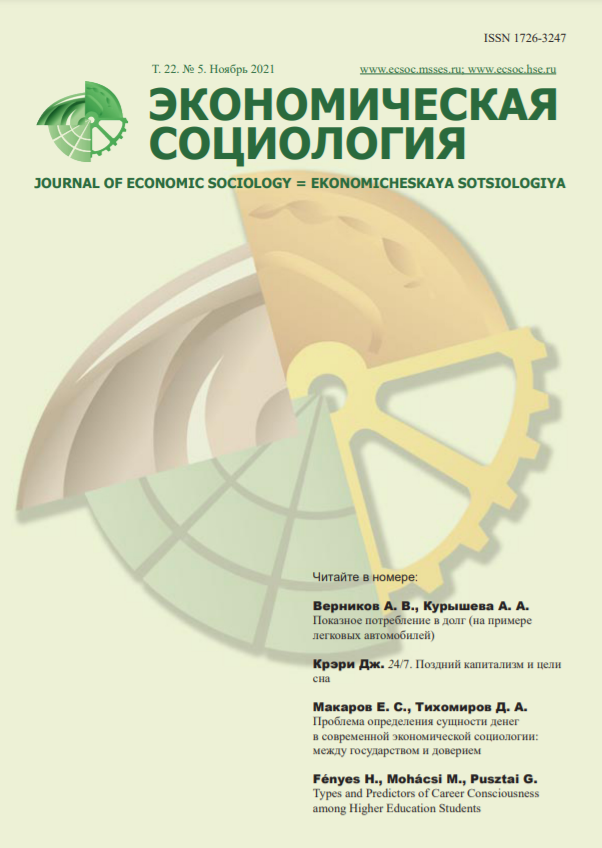Precedence and Conspicuousness in Car Consumption
На примере легковых автомобилей
Abstract
We study how the availability of bank loans feeds excessive consump¬tion, including the acquisition of goods for the sake of appearances. The aim of the paper is to review the institutions of consumer behavior and borrowing behavior, which have taken root due to consumer lending, in the case of auto loans in the Rostov region, Russia. We rely on material and statistical data from 2002-2020 from a variety of sources, including the Central Bank of Russia, Rosstat, National Bureau of Credit Histories (NBCH JSC), traffic police, etc. We build and estimate metrics featuring household borrowing behavior with regard to auto loans. The empirical results suggest a habitualization of the precedence of consumption (a term borrowed from Jean Baudrillard), including debt-driven ostenta¬tious consumption. Borrowed money closes the gap between the cost of affordable cars and that of sought-after cars under the influence of socially induced criteria. Household spending on these items grew in ab¬solute and relative terms. Our theoretical contribution is that we integrate the elements of several theories, namely, the concept of the precedence of consumption from sociology, osten-tatious consumption from institutional theory, the social significance of banks as creditors, the socio-economic consequences of financialization, etc. Unlike some other authors, we extend the concept of ostentatious con¬sumption to practically all goods, depending on the motivation that drives an individual, instead of confining it to luxury goods purchases by high-net-worth individuals. The contribution to the empirical literature is that we operationalize theoretical constructs in order to quantify them using factual data on auto loans. We conclude that the concepts of the precedence of consumption and ostentatious consumption remain valuable instruments in enabling us to interpret a number of empirical effects of financialization at the household level.













